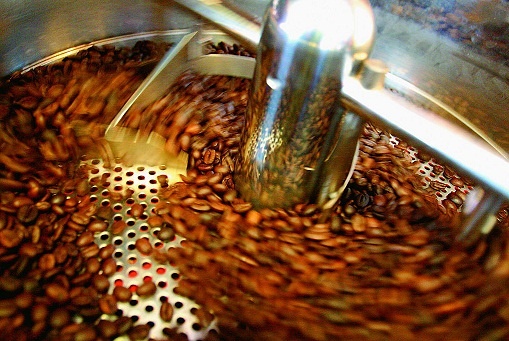To make espresso, you should use mixed beans about Italian concentrated (espresso) blending and flavor.

Commercial coffee trees planted are mainly divided into three categories: Arabica (Arabica), Robusta (Robusta) and Liberika (Liberica). Among them, Liberika (Liberica) is rarely seen because of its small output.
It is generally believed that Arabica coffee beans grown at high altitudes have elegant aroma and taste, while Robusta coffee beans grown at low altitudes have the bitterness of wood and Punch.
In Italian coffee shops, it is most common to mix 10% 40% Robusta beans with Arabica coffee beans as the base.
The higher the proportion of Robusta coffee beans mixed, the stronger the espresso flavor and the easier it is to form crema. However, it also loses its original delicacy and aroma.
In many cafes (Australia, Seattle, USA, etc.), most of them use 100% Arabica coffee beans
The flavor of espresso does not only depend on the roasting effect of coffee beans, but also comes from the blending of coffee beans.
The ideal Italian concentrated (espresso) flavor should be that all the elements can be balanced and the taste is bright. After drinking it, the throat feels mellow rather than bitter.
To put it more specifically, it should have moderate acidity, bitterness, sweetness, rich taste (flavor), solid and strong consistency (body), and a lasting finish (aftertaste) that feels like a refreshing sour citrus.
And when making cappuccino (Cappuccino), it can blend with milk, and the sweetness of milk is clear and prominent. In this way, even without sugar, it will be delicious.
Use 100% Arabica (Arabica) coffee beans, divided into single Italian concentrated beans, or mixed Italian concentrated beans.
What the latter needs is to choose to match each other to enhance the flavor, increase the overall taste and rhyme, and supplement the lack of consistency of a single variety.
Let me give you an example:
Japan's espresso has mixed four kinds of coffee beans, based on Brazilian beans, and then used Kenyan, Bolivian and Papuan beans to make up for the missing elements. All four of the above are Arabica.
The principle explains: "Brazilian beans used as a base use beans with a cocoa-like flavor of chocolate (flavor), while Kenyan beans are made of beans with a refreshing sour taste of lemon or grapefruit, the sour taste of citrus that exudes a refreshing aftertaste. Bolivian beans taste similar to Brazilian beans. Adding the mixture is to enhance the taste of Brazilian beans. Papuan beans are high in oil (crema) and can be used to increase body. "
Ps:
Aftertaste: refers to the aftertaste and fragrance left in the nasal cavity of the mouth after drinking.
Source:
The blog of coffee man Lu Xiansen
Important Notice :
前街咖啡 FrontStreet Coffee has moved to new addredd:
FrontStreet Coffee Address: 315,Donghua East Road,GuangZhou
Tel:020 38364473
- Prev

Coffee brewing method powder quantity control (supplement) and the standard of pressing powder to make Italian coffee
Mentioned scraper, it allows you to control the amount of powder, but the disadvantage is that it will waste the amount of powder. Mentioned scraper, it allows you to control the amount of powder, but the disadvantage is that it will waste the amount of powder. In fact, it also has a limitation, if a filter bowl can hold 18g powder, the scraper can only control the amount of powder by scraping off the powder. So the upper limit of the powder bowl of 18g is only 18g. Of course, some coffee
- Next

Simple understanding of coffee bean roasting and attention should be paid to the preservation conditions so as not to lose the flavor of coffee beans.
The roasting of coffee beans is the process of converting coffee from raw beans to ripe beans, which is generally divided into eight stages: very shallow roasting (LIGHT Roast), shallow roasting (CINNAMON Roast), micro roasting (MEDIUM Roast), medium roasting (HIGH Roast), medium and deep roasting (CITY Roast), deep roasting (FULL-CITY Roast), very deep roasting (FRENCH Roast), and very deep roasting (ITALIAN).
Related
- What is the meaning of lactic acid fermentation with coffee bean treatment?
- How to judge the state of foam by sound?
- How does the latte pull out the unicorn pattern? Come to get for a little trick to improve the flower pull!
- Will flower pulling affect the taste of the latte?
- Do you know the history of coffee?
- The difference between honey treatment and sun washing what is raisin honey treatment?
- What kind of milk can a novice use to make coffee foam to keep the foam longer? The correct method and skills of milking tutorial sharing
- Why do washed coffee beans taste sour? Flavor characteristics of washed Coffee
- Introduction to the skill of how to practice the size and height of water injection around the circle of hand-brewed coffee
- How do beginners practice coffee flower drawing from scratch?

